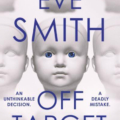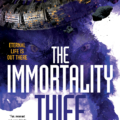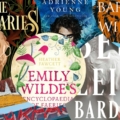Of all the objects we anthropomorphize, I think houses must be our favorite. Why else would we describe them as having character, or good bones? Every child’s drawing of a house is just a face with square eyes. Writers—who are in the business of exaggeration—get to go further. We give houses appetites and atmospheres, secrets and grudges and dreams. They don’t merely have character—they are characters.
They come in different genres, of course. There are the fairy tale houses: enchanted castles, glass palaces, witch’s huts on spindly chicken legs, beautiful Victorians occupied by generations of Owens women. The fairy tale house might be charming and helpful, or beautiful and mysterious, but it’s probably on your side.
The house is never on your side in a gothic. It’s a cursed inheritance, haunted by the ghosts of history. That’s why gothic houses are always old, and always big; most great fortunes began in flesh, one way or another. (It’s not, perhaps, totally coincidental that the gothic as an aesthetic genre emerged at the height of the trans-Atlantic slave trade, or that it was perfected by Black American writers.)
But in every genre, I think the sentient house exists in the space between the word house—a place that belongs to us—and the word home—a place we belong to. No one truly hates or loves a house; the house is not where the heart is. But in fiction, the house and the home can merge, and come alive.
My home is Kentucky. It’s a beautiful place: where both sides of my family are from, where both my kids were born, where I always thought I would stay. But it’s also a terrible place: riddled with racism and homophobia and good-ol-boy sexism, politically hostile, economically bleak. So Starling House, which is set in Kentucky, had to be two things at once: a gothic and a fairy tale. The house had to be so terrible you would run from it, and so beautiful you would miss it every day.
To build it, I borrowed from some of the most wonderful and terrible houses in fiction.
Beloved by Toni Morrison

It feels a little embarrassing to put Toni Morrison on a listicle, but even worse to omit Sethe’s home from the canon of literary houses. We meet the house in the first line–124 was spiteful. Full of baby’s venom—and we never really recover.
Howl’s Moving Castle (2004)

With the awareness that I’m badly betraying loyal Diana Wynne Jones readers, I can’t lie: I fell first and hardest with the Miyazaki movie.
It’s the ultimate fairy tale house—a great walking nonsense of architecture, fueled by a fire demon and occupied by a mysterious, dramatic wizard. I still feel a certain peevishness, that I am forced to live in a house with doors that always open to the same place.
Mexican Gothic by Silvia Moreno-Garcia

Moreno-Garcia is a professional genre-jumper. She doesn’t do it casually: each of her novels is positioned carefully, almost lovingly, within the tropes and conventions of its antecedents.
Which is why High Place so perfectly embodies the classic gothic house—an isolated mansion, a seemingly-alluring heir, a madwoman in the attic, etc. But she also subverts those tropes, making something sharply, gruesomely, beautifully new from an old gothic formula.
We Have Always Lived in the Castle by Shirley Jackson

Hill House is spookier, but Blackwood House is the one that haunts me. Hill House is, to me, straightforwardly terrifying.
It’s an animal, not sane, a thing you should run from. But Merricat doesn’t want to run from Blackwood House. She wants to stay, forever and ever, playing house in an endless false childhood, while the house decays around her.
The worst monsters are the ones you don’t want to run from.
Piranesi by Susanna Clarke

There is no book quite like this one, and no house quite like Piranesi’s House. The House is the whole world, here: an infinity of halls and rooms, large enough for oceans and tides and whole weather systems. The book is more like a Robinsonade than anything else—the narrative of a man surviving in a harsh world, entirely alone.
But however elemental and strange the house is, however lonely and bleak and uncaring, Piranesi loves it. Of course he does; it’s home.
Starling House by Alix E Harrow is out now from Tor.




